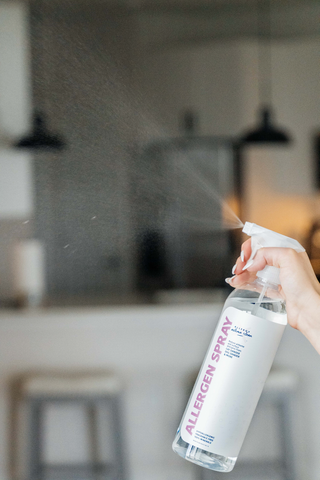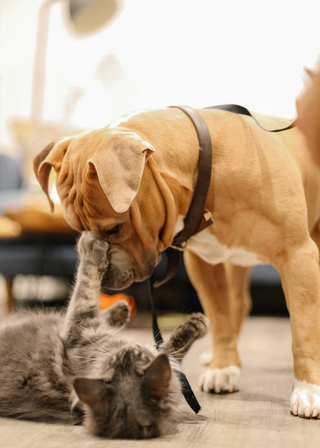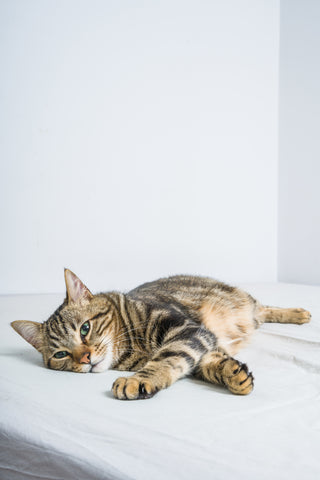Air pollution is invisible contamination by harmful pollutants including PM2.5 particles (penetrate deep lungs), ground-level ozone, nitrogen oxides (NOx), sulfur oxides (SOx), carbon monoxide (CO), and volatile organic compounds (VOCs). WHO estimates 7 million premature deaths annually from air pollution. Health impacts include respiratory problems (asthma, bronchitis, COPD), heart disease (attacks, strokes), lung cancer, mental health issues (depression, anxiety), birth defects, and diabetes. Asthmatics should monitor air quality, limit outdoor activity during high pollution, use air purifiers, close windows/doors, wear lab-verified masks. Reduce indoor pollution by eliminating smoking, using eco-friendly fragrance-free cleaners, choosing low-VOC paints, improving ventilation, and using HEPA air purifiers.
Key Takeaways:
- Six main air pollutants – PM2.5 particles (under 2.5 micrometers), ground-level ozone (lung irritant), NOx (vehicle/power plant emissions), SOx (fossil fuel combustion), CO (interferes oxygen transport), VOCs (paints, cleaners causing smog)
- Devastating global health crisis – WHO: 7 million premature deaths annually from air pollution; claims more lives than traffic accidents; low/middle-income countries disproportionately affected by industrialization, traffic congestion, low-quality fuels
- Multiple health impacts documented – respiratory damage (asthma, bronchitis, COPD), heart disease (hardened arteries, attacks, strokes), lung cancer, mental health (depression, anxiety), pregnancy complications (birth defects), type 2 diabetes
- Asthma-specific dangers – PM2.5 causes airway inflammation and bronchoconstriction; increases overall airway sensitivity to allergens/triggers; monitor air quality, limit outdoor activity during high pollution, adhere to treatment plans
- Indoor pollution reduction strategies – eliminate smoking completely, use eco-friendly fragrance-free cleaning products (low VOCs), choose low-VOC paints/varnishes, improve ventilation with exhaust fans, seal windows/doors against second-hand smoke
- Air purifier effectiveness – HEPA filters remove dust, allergens, pollutants; verify purifier handles CO and NOx; place strategically in frequently used rooms (especially bedrooms); asthmatics should wear lab-verified masks outdoors
What is Air Pollution?
Air pollution is the contamination of the air we breathe by harmful substances known as pollutants. These pollutants can be in the form of solid particles, liquid droplets, or harmful gases. Unlike the occasional whiff of smoke from a backyard barbecue, air pollution is constant and invisible, making it a silent threat to our health and environment.
Air pollution is a nasty mix of different things, both solid and gaseous. Here's a breakdown of the main culprits:
- Particulate Matter (PM): These are tiny particles that can lodge deep in your lungs. They come in various sizes, with PM2.5 (particles less than 2.5 micrometers in diameter) being the most concerning due to their ability to penetrate deep into the lungs. Sources include vehicle emissions, industrial processes, and wildfires.
- Ground-Level Ozone: Unlike the ozone layer protecting us from the sun's harmful rays, ground-level ozone is a pollutant created by chemical reactions involving sunlight and pollutants like nitrogen oxides. This can irritate the lungs and worsen respiratory problems.
- Nitrogen Oxides (NOx): These gases are released during fuel combustion in vehicles and power plants. They can irritate the lungs and contribute to the formation of smog and ground-level ozone.
- Sulfur Oxides (SOx): Similar to NOx, these gases are released from burning fossil fuels like coal. They can cause respiratory problems and contribute to acid rain.
- Carbon Monoxide (CO): This colorless, odorless gas is a product of incomplete combustion. It interferes with the blood's ability to carry oxygen, leading to headaches, dizziness, and fatigue at high concentrations.
- Volatile Organic Compounds (VOCs): These are organic chemicals that easily evaporate at room temperature. They can come from various sources like paints, cleaning products, and some industrial processes. VOCs can irritate the eyes, nose, and throat, and contribute to smog formation.
The Hard Truth About Air Pollution and Our Health
Air pollution might seem like an environmental issue, but it has a shockingly direct impact on our health. When we breathe in polluted air, these harmful pollutants irritate and damage our respiratory system, leading to a variety of health problems.
A. Respiratory Problems:
- Lungs Under Attack: Air pollutants like particulate matter (PM2.5) are tiny and can easily enter deep into our lungs. This irritates the delicate lung tissue, causing inflammation and coughing.
- Common Culprit: Exposure to air pollution can worsen pre-existing respiratory conditions like asthma, bronchitis, and Chronic Obstructive Pulmonary Disease (COPD). It can also increase the frequency and severity of attacks.
B. Heart Disease:
Air pollution doesn't just affect our lungs. Fine particles can enter the bloodstream and damage blood vessels, increasing the risk of:
- Heart Attacks: By hardening and narrowing arteries, air pollution can contribute to heart attacks.
- Strokes: Damaged blood vessels can also lead to strokes, where blood flow to the brain is interrupted.
C. Cancer:
The long-term presence of certain pollutants in the air has been linked to an increased risk of lung cancer.
D. Other Health Issues:
Emerging research suggests air pollution may also play a role in:
- Mental Health: Studies have linked air pollution to an increased risk of depression and anxiety.
- Birth Defects: Exposure during pregnancy may be linked to birth defects.
- Diabetes: Air pollution might contribute to the development of type 2 diabetes.
A Global Impact
Air pollution isn't just a local issue. It's a global threat with a devastating impact on human health. The World Health Organization (WHO) estimates that 7 million people die prematurely each year due to air pollution, both indoors and outdoors [1].
This staggering number translates to a silent health crisis, claiming more lives annually than traffic accidents.
A. Unequal Burden:
Unfortunately, the burden of air pollution is not evenly distributed. Low- and middle-income countries, particularly in rapidly developing regions, are disproportionately affected. This is due to a combination of factors:
- Industrialization: Rapid industrial growth often comes at the cost of lax environmental regulations, leading to increased air pollution from factories and power plants.
- Traffic Congestion: Growing urban populations and limited public transport options contribute to heavy traffic congestion, a major source of air pollution in many developing cities.
- Fuel Sources: The reliance on low-quality fuels like coal for cooking and heating further causes air pollution problems in these regions.
This unequal burden highlights the need for global cooperation in addressing air pollution. Developed nations can provide technological and financial assistance to help developing countries adopt cleaner technologies and implement stricter environmental regulations.
The Worst Cities for Air Pollution
Countries in 2023 with average PM2.5 levels pose extremely high health risks, exceeds WHO guidelines by 7 to 10 times!
- Bangladesh
- Pakistan
- Patna
- New Delhi
- Dehli
- Urumqi
Air Pollution and Asthma: The Link
- Increased Inflammation: Air pollutants like PM2.5 can irritate the lining of the airways, leading to inflammation and narrowing of the airways (broncho constriction). This makes breathing difficult and can trigger asthma attacks or respiratory distress.
- Increased Sensitivity: Exposure to air pollution can increase overall airway sensitivity, making asthmatics more susceptible to allergens and other triggers.
What Asthmatics Can Do:
- Monitor Air Quality: Staying informed about current air quality levels is crucial. Many cities have air quality monitoring programs that provide real-time data.
- Limit Outdoor Activity: When air pollution levels are high, it's best to limit outdoor activity, especially during peak pollution hours. This can help reduce exposure to harmful pollutants.
- Adhere to Treatment Plans: Asthmatics should strictly follow their doctor-prescribed medication plans to manage their condition effectively.
- Use Air Purifiers: Consider using air purifiers in your bedroom and home to help reduce exposure to pollutants.
- Close Windows and Doors: Don't leave windows or doors open unless absolutely necessary.
- Use a Mask: Take a mask with you when you leave the house. Look for a mask that is lab verified.
Combating Indoor Air Pollution
While we can't control outdoor air quality entirely, we can create a healthier environment inside our homes. Here are some steps you can take to reduce indoor air pollution to breathe easier:
A. Reduce Indoor Air Pollution Sources:
- Banish Smoking: Smoking is a major source of indoor air pollution. Eliminate smoking indoors completely and encourage smoking cessation for yourself and others in your household.
- Mind Your Cleaning Products: Many cleaning products contain harsh chemicals that can irritate the lungs. Look for eco-friendly cleaning products with low volatile organic compounds (VOCs). Fragrance free is certainly ideal.
- Manage Paint and Varnishes: During renovations or painting projects, choose low-VOC paints and varnishes. Ensure proper ventilation when using these products and avoid prolonged exposure.
- Watch Out for Second-Hand Smoke: If you live in close proximity to smokers, consider using air purifiers or sealing windows and doors to minimize smoke infiltration.
B. Improve Ventilation:
- Open Windows (when feasible): Opening windows and doors allows fresh air to circulate. However, be mindful of outdoor air quality, especially during peak pollution times and if you live in a highly polluted city or by a major road.
- Exhaust Fans Are Your Friends: Utilize exhaust fans in kitchens and bathrooms to remove moisture and pollutants generated during cooking and showering.
- Consider Ventilation Systems: For long-term improvement, consider installing a whole-house ventilation system that helps circulate fresh air throughout your home.
C. Air Purifiers:
- Targeted Solution: Air purifiers with HEPA filters can be effective in removing dust, allergens, and other pollutants from the air. Check to make sure your air purifier can deal with air pollution offenders like CO and NOx.
- Placement Matters: Position air purifiers strategically in frequently used rooms such as your bedroom to maximize their effectiveness.
Sources:
-
Respiratory Problems:
- Link to how air pollution irritates the lungs and airways: https://www.who.int/thailand/health-topics/air-pollution
- Mention common illnesses like asthma, bronchitis, and COPD: https://www.lung.org/research/sota/health-risks
-
Heart Disease:
- Explains how air pollution can damage the heart and blood vessels: https://www.heart.org/-/media/Files/About-Us/Policy-Research/Fact-Sheets/Clean-Air/Air-Pollution-and-CVD.pdf
-
Cancer:
- Briefly describes the link between air pollution and increased cancer risk: https://www.aacr.org/patients-caregivers/progress-against-cancer/air-pollution-associated-cancer/
- Other Health Issues:
- World Health Organization: https://www.who.int/health-topics/air-pollution


















